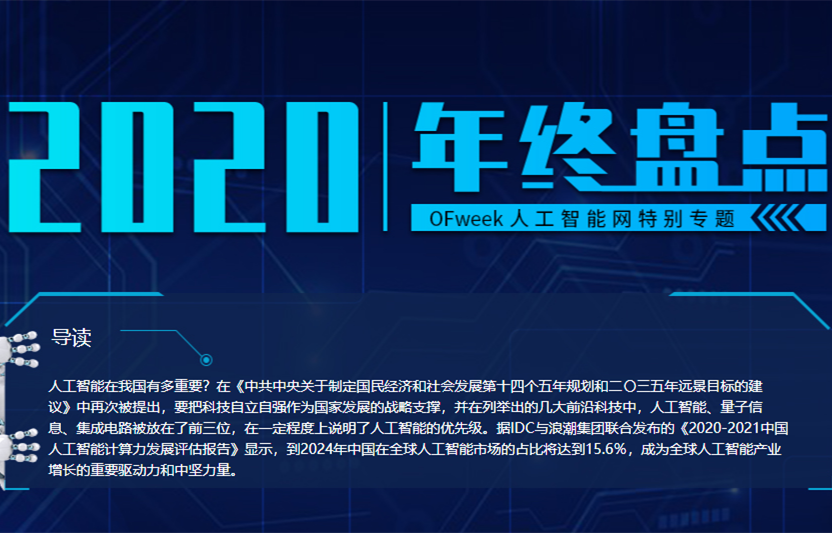如何创建一个能够区分或识别图像的系统?
让我们可视化来自橄榄球和足球的随机图像:plt.figure(figsize = (5,5))
plt.imshow(train[1][0])
plt.title(labels[train[0][1]])
输出:

足球图片也应用相同操作:plt.figure(figsize = (5,5))
plt.imshow(train[-1][0])
plt.title(labels[train[-1][1]])
输出:

步骤4: 数据预处理和数据增强接下来,在继续构建模型之前,我们执行一些数据预处理和数据增强。x_train = []
y_train = []
x_val = []
y_val = []
for feature, label in train:
x_train.append(feature)
y_train.append(label)
for feature, label in val:
x_val.append(feature)
y_val.append(label)
# Normalize the data
x_train = np.array(x_train) / 255
x_val = np.array(x_val) / 255
x_train.reshape(-1, img_size, img_size, 1)
y_train = np.array(y_train)
x_val.reshape(-1, img_size, img_size, 1)
y_val = np.array(y_val)
对训练数据的数据增强:datagen = ImageDataGenerator(
featurewise_center=False, # set input mean to 0 over the dataset
samplewise_center=False, # set each sample mean to 0
featurewise_std_normalization=False, # divide inputs by std of the dataset
samplewise_std_normalization=False, # divide each input by its std
zca_whitening=False, # apply ZCA whitening
rotation_range = 30, # randomly rotate images in the range (degrees, 0 to 180)
zoom_range = 0.2, # Randomly zoom image
width_shift_range=0.1, # randomly shift images horizontally (fraction of total width)
height_shift_range=0.1, # randomly shift images vertically (fraction of total height)
horizontal_flip = True, # randomly flip images
vertical_flip=False) # randomly flip images
datagen.fit(x_train)
步骤5: 定义模型让我们定义一个简单的CNN模型,有3个卷积层,然后是max-pooling层。在第3次maxpool操作后添加一个dropout层,以避免过度拟合。model = Sequential()
model.add(Conv2D(32,3,padding="same", activation="relu", input_shape=(224,224,3)))
model.add(MaxPool2D())
model.add(Conv2D(32, 3, padding="same", activation="relu"))
model.add(MaxPool2D())
model.add(Conv2D(64, 3, padding="same", activation="relu"))
model.add(MaxPool2D())
model.add(Dropout(0.4))
model.add(Flatten())
model.add(Dense(128,activation="relu"))
model.add(Dense(2, activation="softmax"))
model.summary()
现在让我们使用Adam作为优化器,SparseCategoricalCrossentropy作为损失函数来编译模型。我们使用较低的学习率0.000001来获得更平滑的曲线。opt = Adam(lr=0.000001)
model.compile(optimizer = opt , loss = tf.keras.losses.SparseCategoricalCrossentropy(from_logits=True) , metrics = ['accuracy'])
现在,让我们训练我们的模型500个epochs,因为我们的学习速率非常小。history = model.fit(x_train,y_train,epochs = 500 , validation_data = (x_val, y_val))
步骤6: 评估结果我们将绘制我们的训练和验证的准确性以及训练和验证的损失。acc = history.history['accuracy']
val_acc = history.history['val_accuracy']
loss = history.history['loss']
val_loss = history.history['val_loss']
epochs_range = range(500)
plt.figure(figsize=(15, 15))
plt.subplot(2, 2, 1)
plt.plot(epochs_range, acc, label='Training Accuracy')
plt.plot(epochs_range, val_acc, label='Validation Accuracy')
plt.legend(loc='lower right')
plt.title('Training and Validation Accuracy')
plt.subplot(2, 2, 2)
plt.plot(epochs_range, loss, label='Training Loss')
plt.plot(epochs_range, val_loss, label='Validation Loss')
plt.legend(loc='upper right')
plt.title('Training and Validation Loss')
plt.show()
让我们看看曲线是怎样的-

我们可以打印出分类报告,看看精度和准确性。predictions = model.predict_classes(x_val)
predictions = predictions.reshape(1,-1)[0]
print(classification_report(y_val, predictions, target_names = ['Rugby (Class 0)','Soccer (Class 1)']))

我们可以看到,我们简单的CNN模型能够达到83%的准确率。通过一些超参数调整,我们或许可以提高2-3%的精度。我们还可以将一些预测错误的图像可视化,看看我们的分类器哪里出错了。迁移学习的艺术我们先来看看迁移学习是什么。迁移学习是一种机器学习技术,在一个任务上训练的模型被重新用于第二个相关的任务。迁移学习的另一个关键应用是当数据集很小的时候,通过在相似的图像上使用预先训练过的模型,我们可以很容易地提高性能。既然我们的问题陈述很适合迁移学习,那么让我们看看我们可以如何执行一个预先训练好的模型,以及我们能够达到什么样的精度。步骤1: 导入模型我们将从MobileNetV2模型创建一个基本模型。这是在ImageNet数据集上预先训练的,ImageNet数据集是一个包含1.4M图像和1000个类的大型数据集。这个知识库将帮助我们从特定数据集中对橄榄球和足球进行分类。通过指定参数 include_top=False,可以加载一个不包含顶部分类层的网络。base_model = tf.keras.applications.MobileNetV2(input_shape = (224, 224, 3), include_top = False, weights = "imagenet")
在编译和训练模型之前冻结基础模型是很重要的。冻结后将防止我们的基础模型中的权重在训练期间被更新。base_model.trainable = False
接下来,我们使用base_model定义模型,然后使用GlobalAveragePooling函数将每个图像的特征转换为单个矢量。我们添加0.2的dropout和最终的全连接层,有2个神经元和softmax激活。model = tf.keras.Sequential([base_model,
tf.keras.layers.GlobalAveragePooling2D(),
tf.keras.layers.Dropout(0.2),
tf.keras.layers.Dense(2, activation="softmax")
])
接下来,让我们编译模型并开始训练它。base_learning_rate = 0.00001
model.compile(optimizer=tf.keras.optimizers.Adam(lr=base_learning_rate),
loss=tf.keras.losses.BinaryCrossentropy(from_logits=True),
metrics=['accuracy'])
history = model.fit(x_train,y_train,epochs = 500 , validation_data = (x_val, y_val))
步骤2: 评估结果acc = history.history['accuracy']
val_acc = history.history['val_accuracy']
loss = history.history['loss']
val_loss = history.history['val_loss']
epochs_range = range(500)
plt.figure(figsize=(15, 15))
plt.subplot(2, 2, 1)
plt.plot(epochs_range, acc, label='Training Accuracy')
plt.plot(epochs_range, val_acc, label='Validation Accuracy')
plt.legend(loc='lower right')
plt.title('Training and Validation Accuracy')
plt.subplot(2, 2, 2)
plt.plot(epochs_range, loss, label='Training Loss')
plt.plot(epochs_range, val_loss, label='Validation Loss')
plt.legend(loc='upper right')
plt.title('Training and Validation Loss')
plt.show()
让我们看看曲线是怎样的-

我们也打印一下分类报告,以便得到更详细的结果。predictions = model.predict_classes(x_val)
predictions = predictions.reshape(1,-1)[0]
print(classification_report(y_val, predictions, target_names = ['Rugby (Class 0)','Soccer (Class 1)']))

我们可以看到,通过迁移学习,我们可以得到更好的结果。橄榄球和足球的精度都高于我们的CNN模型,而且总体精度达到了91%,这对于这样一个小数据集来说是非常好的。通过一些超参数调优和更改参数,我们也可以获得更好的性能!下一步是什么?这只是计算机视觉领域的起点。事实上,试着改进你的基础CNN模型来匹配或超过基准性能。你可以从VGG16等的架构中学习超参数调优的一些线索。你可以使用相同的ImageDataGenerator来增强图像并增加数据集的大小。此外,你还可以尝试实现更新和更好的架构,如DenseNet和XceptionNet。你也可以移动到其他的计算机视觉任务,如目标检测和分割,你将意识到这些任务也可以简化为图像分类。尾注祝贺你已经学习了如何创建自己的数据集、创建CNN模型或执行迁移学习来解决问题。我们在这篇文章中学到了很多,从学习寻找图像数据到创建能够实现合理性能的简单CNN模型。我们还学习了迁移学习的应用,进一步提高了我们的绩效。这还没有结束,我们看到我们的模型错误分类了很多图像,这意味着仍然有改进的空间。我们可以从寻找更多的数据开始,甚至实现更好的、最新的架构,以便更好地识别特性。

最新活动更多
-
7月22-29日立即报名>> 【线下论坛】第三届安富利汽车生态圈峰会
-
7.30-8.1火热报名中>> 全数会2025(第六届)机器人及智能工厂展
-
7月31日免费预约>> OFweek 2025具身智能机器人产业技术创新应用论坛
-
免费参会立即报名>> 7月30日- 8月1日 2025全数会工业芯片与传感仪表展
-
即日-2025.8.1立即下载>> 《2024智能制造产业高端化、智能化、绿色化发展蓝皮书》
-
8月5日立即报名>> 【在线会议】CAE优化设计:医疗器械设计的应用案例与方案解析











 分享
分享















发表评论
登录
手机
验证码
手机/邮箱/用户名
密码
立即登录即可访问所有OFweek服务
还不是会员?免费注册
忘记密码其他方式
请输入评论内容...
请输入评论/评论长度6~500个字
暂无评论
暂无评论